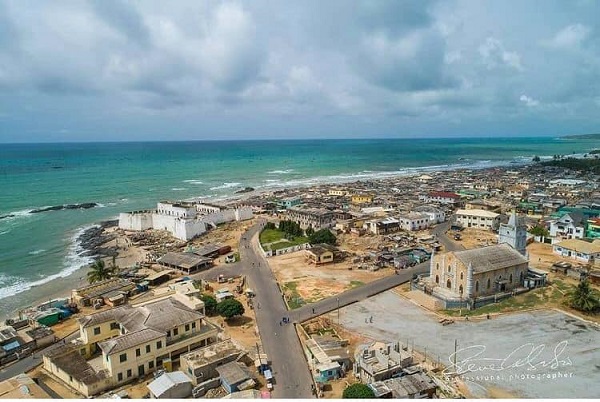
Encounter with two heroes at Anomabo
History gave us some heroes. And by that, the places they are connected with become tourist attractions.
Advertisement
Last weekend, my travelling feet took me all the way to a very special garden at Anomabo in the Central Region. The Anomabo Heroes Centre is adjacent to the Anomabo Fort and the Visitor Centre manned by Enterprising Nana Victor Osei Gyasi and his team.
The park is cute and well-kept and provides the kind of atmosphere one needs to think about our national past and collective future.
Beyond the two statues, which I am about to talk about, the garden also hosts statues of ordinary Ghanaian folks whose stake in this country cannot be overemphasised. While there, one would also wonder about the contributions of places such as Anomabo.
There is more about this historic town later; but for now, let me introduce you to two historic individuals whose life works have made the lives of black people all over the world much better.
George Ekem Ferguson
Known locally as Ekow Atta this hero lived between July 14, 1864 and April 7, 1897. He was a civil servant, surveyor and cartographer who worked in the British colony of Gold Coast.
Born in Anomabo, Ferguson’s father worked for the trading company F. & A. Swanzy in Winneba, while his grandfather, Samuel Ferguson, had been a colonial doctor. Ferguson was educated at Cape Coast and Freetown, Sierra Leone.
He became a Methodist minister and returned to Cape Coast, where he worked as a teacher at the Mfantsipim School. Later in the year, he joined the Colonial Service and received a position at the Governor’s office.
During this period, he travelled with the governor on visits across the entire Gold Coast. Ferguson was invaluable to the colonial authorities in the arbitration of tribal disputes, such as that between the Krobo and Akwamu in 1886 because he could speak Fante and Ga, allowing him to communicate with the vast majority of the southern inhabitants of the colony.
He also produced a map of the colony and surveyed the water supply of Accra during this period as part of his official duties.
After eight years of service as a junior civil servant, Ferguson applied to study a one-year course at the Royal College of Science, London.
He was given paid leave by the colonial authorities, who encouraged his educational ambitions. In London, he studied Mining, Geology, Surveying, Mathematics and Astronomy; performing well in his June examination, he received a First Class Diploma. (Arhin 1985, p. 5).
In September 1890, he returned to the Gold Coast. On October 21 of the same year, the Governor asked Ferguson to travel from Accra to Atebubu, to prospect for precious stones.
He took additional responsibilities as an Inspector of Trade Roads from October 1893. George Ekem was instrumental in convincing the local chiefs in the North to sign treaties of friendship with the British.
In 1897, a few years before the entire North (including Upper East and West) became a British Protectorate, he was captured and beheaded by Samory, the famous slave raider. Ekem Ferguson is currently buried in Anomabo, his hometown.
Ferguson was the first to draw the Ghana map.
James Emman Kwegyir Aggrey
James Emman Kwegyir Aggrey (October 18, 1875 to July 30, 1927) was an intellectual, missionary and teacher. Aggrey was born in Anomabu. He attended Wesleyan High School (now Mfantsipim School) Cape Coast, where the teachers noted that he was precocious, already studying Greek and Latin, and he subsequently rose to become the school's headmaster.
In 1898, at the age of 23, Aggrey was selected due to his education to be trained in the United States as a missionary. He settled in Salisbury, North Carolina, and attended Livingstone College.
He studied a variety of subjects at the university, including Chemistry, Physics, Logic, Economics and Politics. In May 1902, he graduated from the university with three academic degrees.
In November 1903, he was appointed a minister in the African Methodist Episcopal Zion Church in Salisbury. In 1905, he married Rose Douglas, a native of Virginia, with whom he had four children.
In the same year, he began to teach at Livingstone College. In 1912, he earned his doctorate in Theology, and in 1914 followed it with a doctorate in Osteopathy.
In 1920, Paul Monroe, a member of the Phelps Stokes Fund offered Aggrey the opportunity to attend a research expedition to Africa. Aggrey accepted and visited what are now 10 different countries in Africa, where he collected and analysed education data.
During this journey, Aggrey made a significant impression and underscored the importance of education among some people who would become important figures in Africa, including Hastings Kamuzu Banda, later President of Malawi; Nnamdi Azikiwe, the first president of Nigeria, and Kwame Nkrumah, the first President of Ghana.
In Ghana, Aggrey delivered a lecture that persuaded Governor Guggisberg that Achimota College should be co-educational. In South Africa, Aggrey delivered a lecture that used the keys of the piano as an image of racial harmony.
In 1924, Aggrey was appointed by the Gold Coast Governor, Sir Frederick Gordon Guggisberg, as the First Vice-Principal of Achimota College in Accra. Aggrey designed the emblem of Achimota College.



